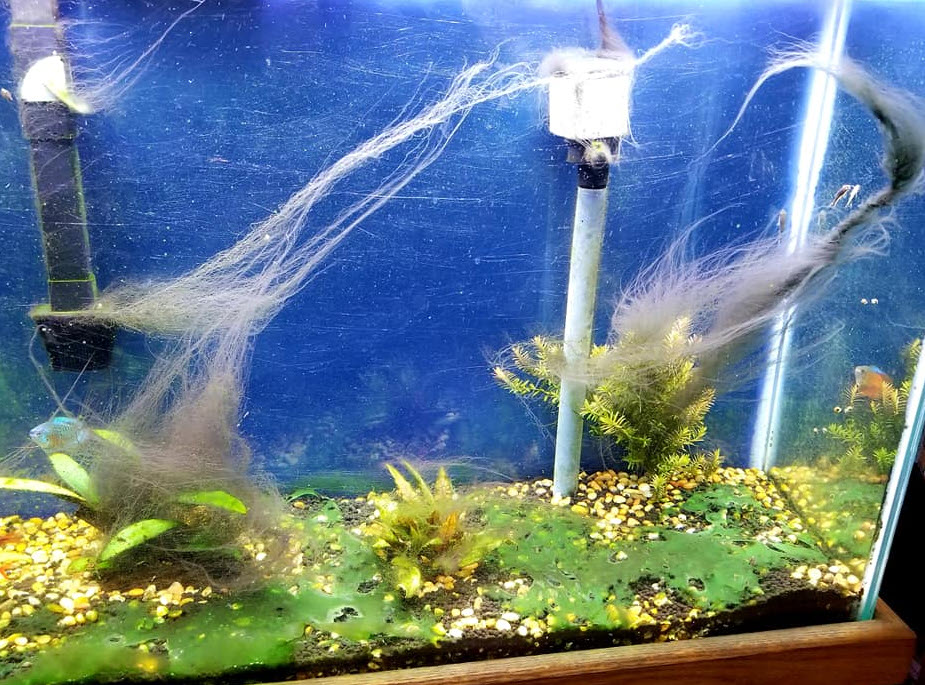
I deliberately added a “gotcha” photo, above, at the top of this article. Most hobbyists would say this tank has an obvious “algae” problem. It doesn’t. The green mat on the substrate is probably not an algae, it is probably a bacteria. And the gray wispy “stuff” is probably something called a “water mold” which used to be a type of “fungus” (but it could also be a true algae). This illustrates how difficult the biology of algae has become.
The biology of algae has become complex with the advent of DNA analysis. For instance, common green algae is more closely related to humans than it is related to “blue-green algae”, which is actually a bacteria. Plants, animals, algae and fungi form one branch of life on earth while bacteria form the second type of life on earth (archaea are the third type of life). The two types of life don’t seem to have a common ancestor.
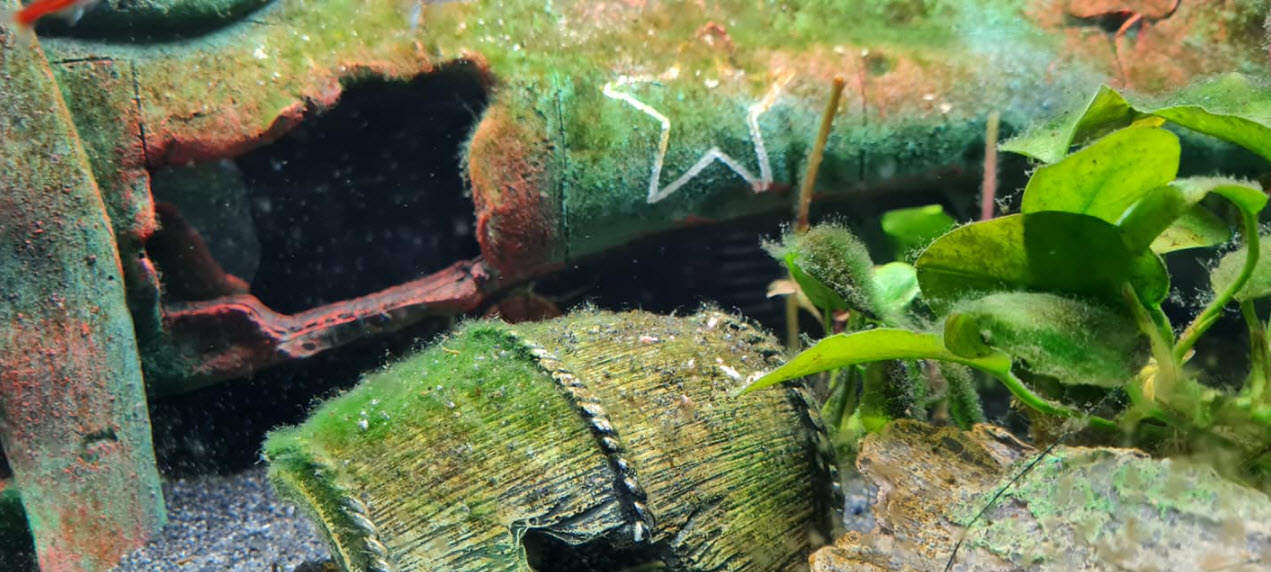
And the whole concept of “types” of algae is always in a state of flux. Every few years there comes along some reclassification which rearranges and changes all the classifications. The classification we use herein, namely Chlorophyta (green algae”), Rhodophyta (“red algae”) and Chrysophyta (“brown algae”), is now considered archaic and each of these groups has now been split up and completely reclassified several times.
Some of the current thinking even says that “red algae” is now not even “algae”. We’re ignoring that line of thinking. This sort of reclassification nonsense just keeps bunch of college PhDs employed.
And further complicating it, the color of an algae doesn’t actually define the algae. The three types of “standard” algae are “brown”, “green” and “red”. But this designation is not as descriptive as it sounds. “Brown colored” films can be brown algae, green algae or red algae. Green films or filaments can be brown algae, green algae, red algae or even a type of bacteria called a “blue green algae” (cyanobacteria). Red or purple color mats can be red algae or blue-green cyanobacteria.
Also, most “algae” patches in the aquarium are actually complex mixtures of many types of algae. If one looks at most “algae” under a microscope one will typically find one algae being predominant, possibly 50% of what you see with the naked eye, and the other 50% being several other varieties of algae and cyanobacteria. Confused yet?
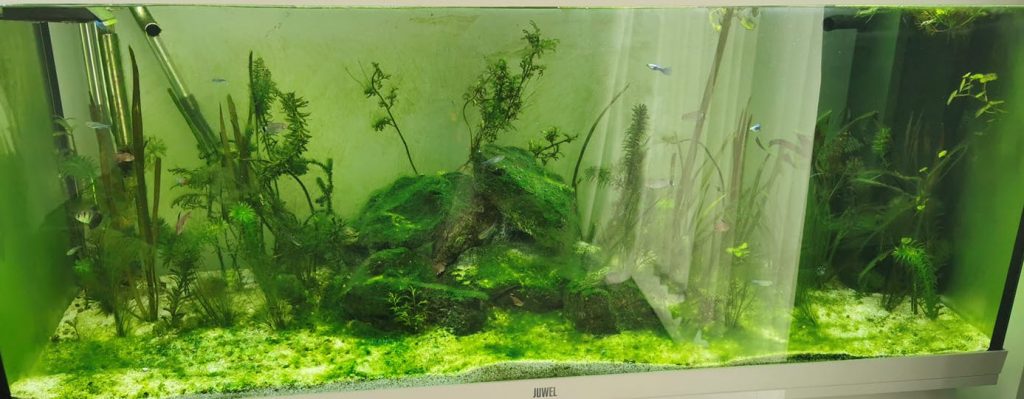
In the old archaic terminology, there are three phylums of true algae (a plant) found in freshwater aquariums defined best by their Latin names:
- Chlorophyta (“green algae”)
- Rhodophyta (“red algae”)
- Chrysophyta (“brown algae” and “diatoms”)
In addition there is the bacteria
- Cyanobacteria (“blue-green algae”)
To the eye, different species from each of the four groups can look identical. For instance: how does one define this algae?
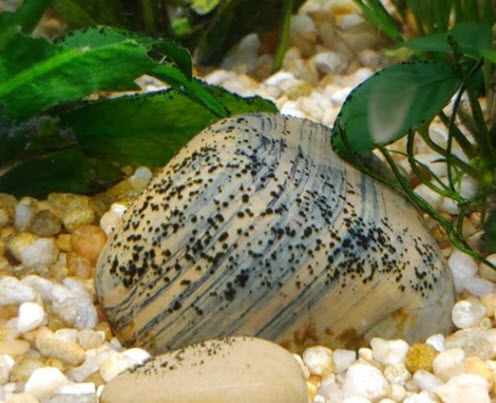
These black spots could be green algae, red algae or brown algae. They could even be a cyanobacteria. It would take a microscope and a good book on algae to find the exact species and type.
And here is a very unusual red algae, thorea hispida:
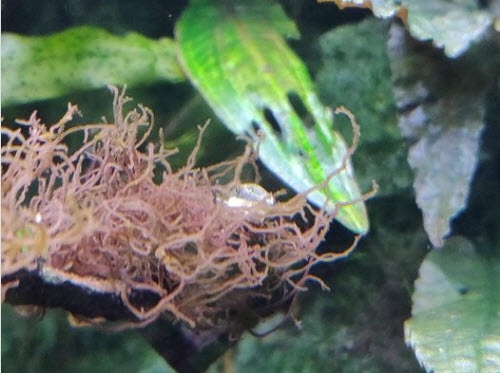
.
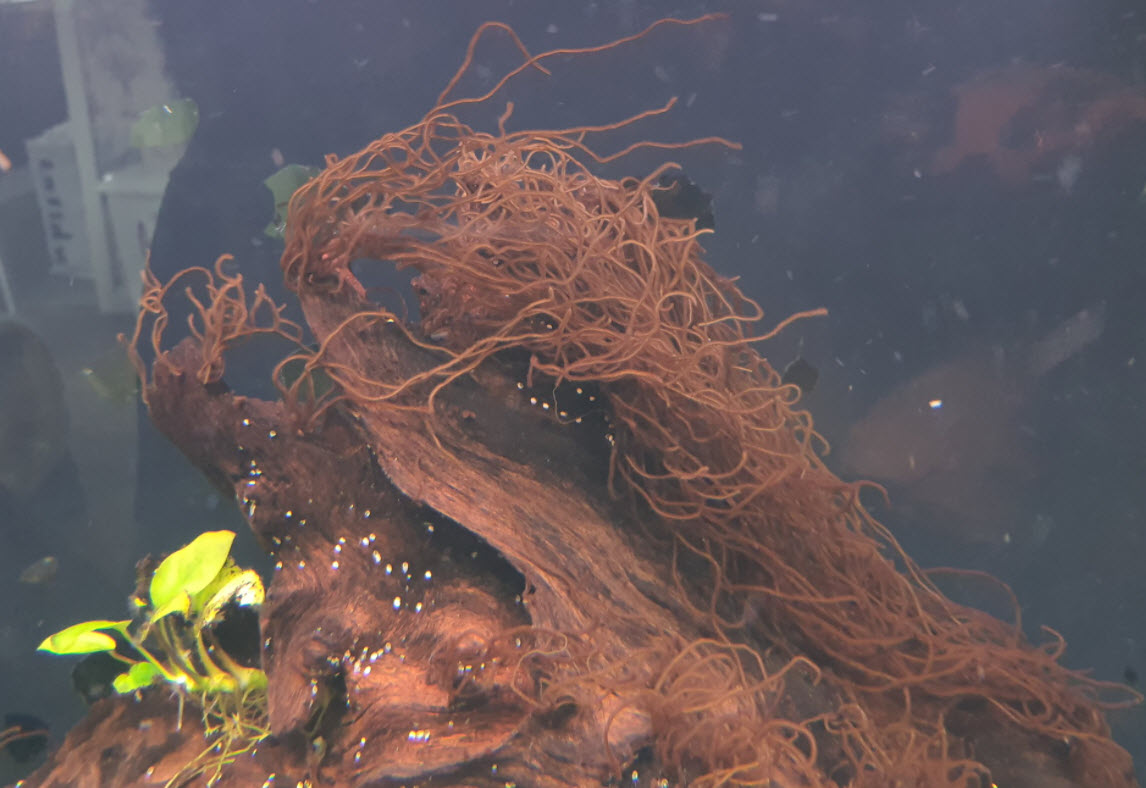
The following mat could be a red algae but I would guess it is a red cyanobacteria. But again it would take a microscope and a good book on algae to find the exact species and type.
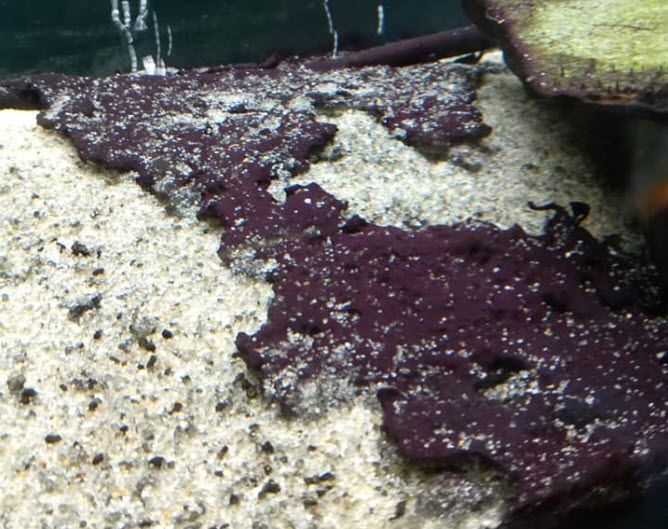
.
Here is a really weird form of cyanobacteria, something called Nostoc Balls (the red filaments are a plastic plant decoration):
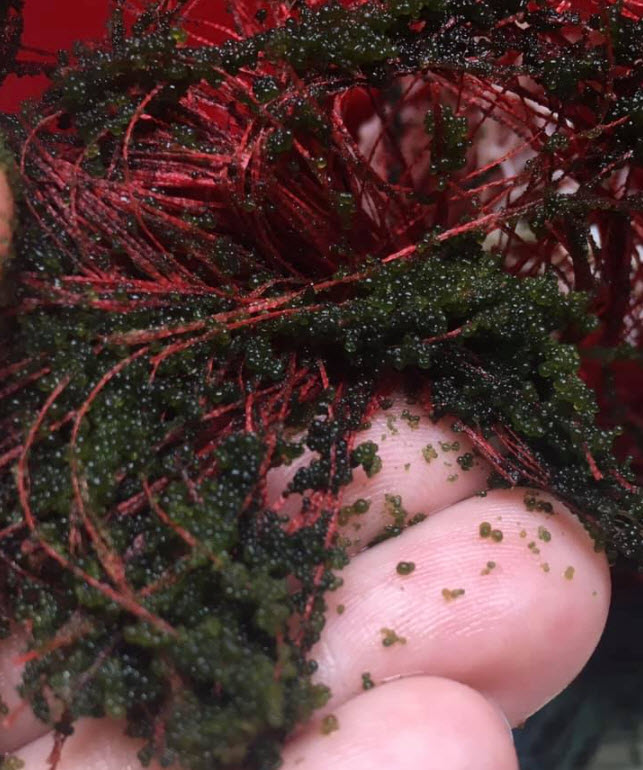
Balls occur in types of green algae (chlorophyta) as well.
Water Mold is not an algae at all yet it is often labeled as a “white algae”. Water mold often appears in aquariums as white, tan, brown or even slightly green wisps that looked like bleached hair algae.
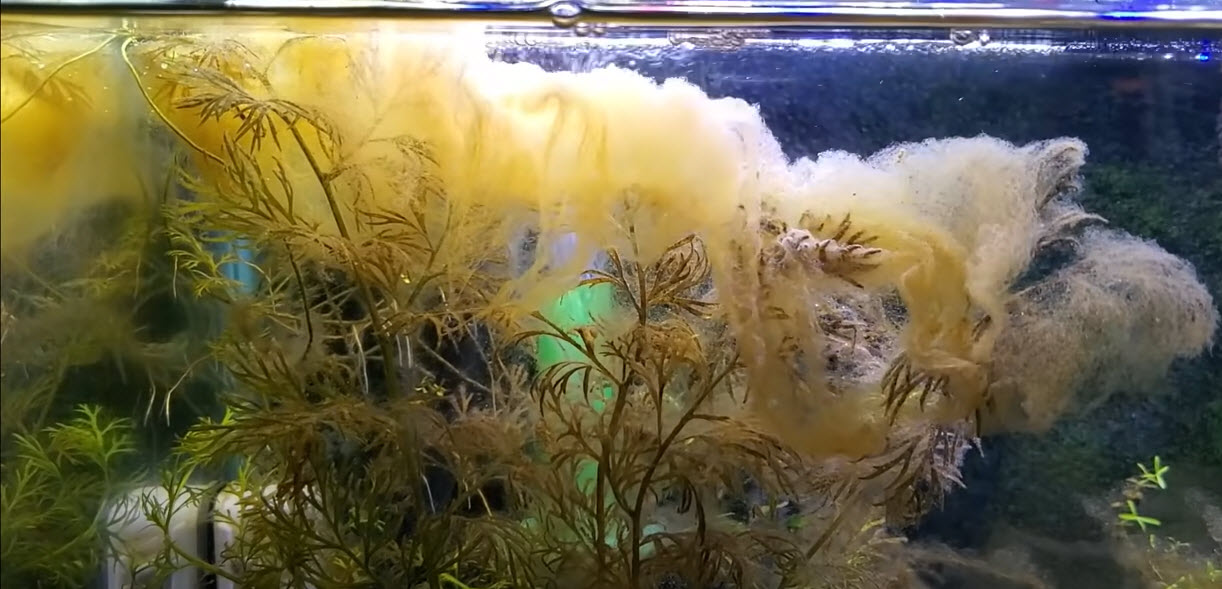
The Terms Hobbyists use for Algae
But everyone in the hobby keeps trying to define the algae in their aquarium as one of about eight different varieties.
- Thread Algae (generally a Chlorophyta but often a Cyanobacteria)
- Blue-Green Algae (generally a Cyanobacteria)
- Blackbeard Algae (generally a Rhodophyta)
- Staghorn Algae (generally a Rhodophyta)
- Green Water (generally a Chlorophyta)
- Brown Algae (generally a Chrysophyta, largely diatoms)
- Green Spot Algae (generally a Chlorophyta)
- Red Spot Algae (generally a Rhodophyta)
Given that there are many tens of thousands of species of algae and cyanobacteria, with a huge amount of “look-a-likes”, this differentiation is just sort of humorous. But I will use these definitions here-in.
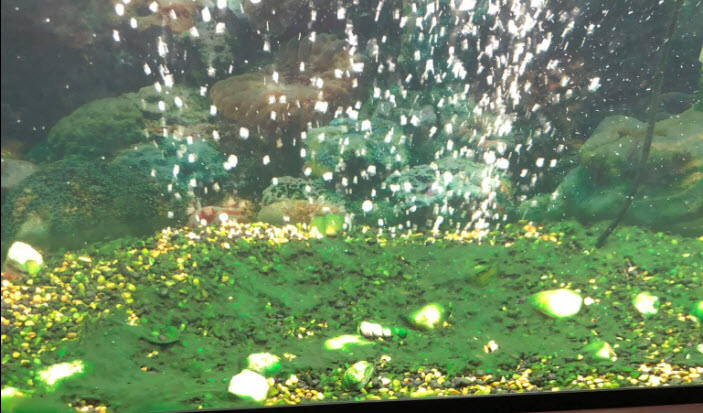
Since there are many tens of thousands of algae species, each of which can respond differently to different courses of action, selecting a suitable course of action to reduce a given algae often becomes simply a guessing game. Here is a link to a general article on how to control all algae:
16.2. Controlling Algae
Each of the “types” of algae seen in the aquarium according to the common name given to each is covered below. Note the caveat that these articles could be completely wrong about which algae is which.
16.3. Thread Algae
16.4. Blue-Green Algae (technically a “Cyanobacteria”)
16.5. Blackbeard Algae
16.6. Staghorn Algae
16.7 Green Water
16.8. “Brown Algae”
16.9. Green Spot Algae
16.12. Red Spot Algae
And finally there are some organisms commonly identified as algae which are not algae:
16.10. Water Molds
16.11. Slime Molds
16.13. A Few Oddities
.
Return to Algae Menu
.
Aquarium Science Website
The chapters shown below or on the right side in maroon lead to close to 400 articles on all aspects of keeping a freshwater aquarium. These articles have NO links to profit making sites and are thus unbiased in their recommendations, unlike all the for-profit sites you will find with Google. Bookmark and browse!
.

Leave a Reply